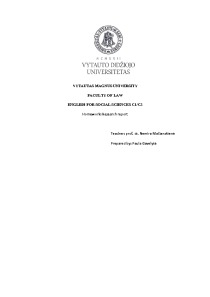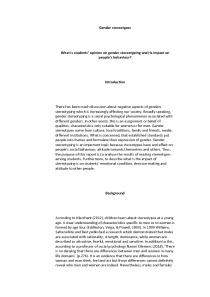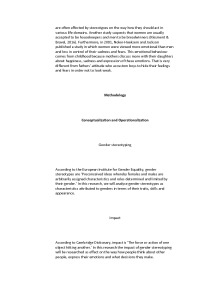Gender Stereotypes: What Is Students’ Opinion On Gender Stereotyping And Its Impact On People’s Behaviour?



Gender stereotypes: What is students’ opinion on gender stereotyping and its impact on people’s behaviour?
There has been much discussion about negative aspects of genders stereotyping which is increasingly affecting our society. Broadly speaking, gender stereotyping is a social psychological phenomenon associated with different genders. In other words, this is an assignment or belief of qualities, characteristics only suitable for women or for men. Gender stereotypes come from culture, local traditions, family and friends, media, different institutions. What is concerned, that established standards put people into frames and formulate their expression of gender. Gender stereotyping is an important topic because stereotypes have and effect on people’s social behaviour, attitude towards themselves and others. Thus, the purpose of this report is to analyse the results of existing stereotypes among students. Furthermore, to describe what is the impact of stereotyping is on students‘ emotional condition, decision-making and attitude to other people.
According to Merchant (2012), children learn about stereotypes at a young age. A clear understanding of characteristics specific to men or to women is formed by age four (Eddleston, Veiga, & Powell, 2003). In 1999 Williams, Satterwhite and Best published a research which demonstrated that males are associated with rationality, strength, dominance, while woman are described as attractive, fearful, emotional and sensitive. In addition to this, according to a professor of social psychology Naomi Ellemers (2018), ‘There is no denying that there are differences between men and women in many life domains’ (p.276). It is an evidence that there are differences in how woman and man think, feel and act but those differences cannot definitely reveal who men and women are indeed. Nevertheless, males and females are often affected by stereotypes on the way how they should act in various life domains. Another study suspects that women are usually accepted to be housekeepers and men to be breadwinners (Klesment & Bravel, 2016). Furthermore, in 2001, Nolen-Hoeksem and Jackson published a study in which women were viewed more emotional than men and less in control of their sadness and fears. This emotional behaviour comes from childhood because mothers discuss more with their daughters about happiness, sadness and expression of these emotions. That is very different from fathers’ attitude who accustom boys to hide their feelings and fears in order not to look weak.
- Culture Individual works
- Microsoft Word 88 KB
- 2020 m.
- English
- 8 pages (2042 words)
- University
- Paula

















